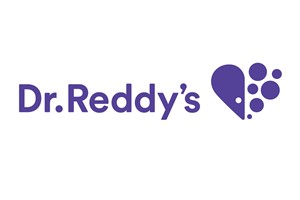In the next 12-18 months insurers are encouraged to capitalize on opportunities and fend off threats as some developments are already impacting the market.
Insurers are strongly encouraged to adopt digital technologies that can reap multiple benefits in the organization. The digitization of underwriting increases market share by encouraging the younger generation and removing the barrier to purchase a laborious application process. Integrating transformative technology with advanced analytics can streamline operational models, reduce cost while improving customer experience and discouraging potential competition.
Transparency Market Research have observed that the improving GDPs of several nations across the globe has favored the growth of the global health insurance market in recent years. Health insurance companies have been benefitting from the rising per capita incomes, the emergence of the middle class, and growing number of people with a relatively high income.
The efforts invested by several companies to make their product offerings as transparent as possible has fared well over the past few years. This move has made it easier for buyers to compare and understand the terms of insurance and the products being sold to them. Additionally, the integration of solutions through data analytics, cloud computing, and other modeling techniques is also projected to encourage the growth of the global market in the near future.
Despite the positive outlook of the global health insurance market, it faces some tough challenges such as intense competition and tough profit margins. The undulating economic conditions have also led a considerable amount of uncertainty in the global market. Deloitte confirms that insurance company leaders have a lot on their plates. Political and regulatory upheavals around the world are changing some of the ground rules about how carriers may operate.
An accelerating evolution in the way business is conducted is being driven by innovation and higher customer expectations, while disruptive newcomers are looking to take market share from incumbent insurers. In particular, carriers have been racing to keep up with insurance technology development. Deloitte recognize that most insurers remain focused on two overarching goals: growing top-line sales while bolstering bottom-line profitability.
Standing in the way of insurers achieving these objectives are a wide range of challenges. Not all of them are within the industry’s control, such as rising interest rates and catastrophe losses. But how effectively insurers anticipate, prepare, and adapt to their shifting circumstances, both strategically and operationally, is well within their control, and can help differentiate them in the market.


Looking ahead and abroad, emerging markets— particularly China—appear to be a better bet for rapid growth, at least on a percentage basis, especially for property-casualty (P&C) insurers. A report by Swiss Re’s sigma research unit found that emerging market P&C premiums rose 9.6 percent in 2016, compared with overall global growth of 3.7 percent—with China, now the world’s third-largest insurance market, seeing non-life premiums soar 20 percent.
Insurers can take advantage of growth opportunities, operational improvement, and expense reduction in 2018 if they can overcome a host of internal and external obstacles standing in their way. An age-old enigma is how to overcome buyer reluctance to purchase life and annuity products. As digital capabilities infiltrate nearly every industry, there appears to be a big opportunity for life and annuity (L&A) companies to transform their business model.
In fact, unless the industry commits to integrating transformative technologies more rapidly into their operations, L&A companies could risk not only continued stagnation, but potential leakage to InsurTech innovators as well. Several insurers are experimenting with connectivity and advanced analytics to narrow the life application-to-closing process from weeks to minutes, lowering onboarding costs, and minimizing the consumer dropout rate.
Accelerated underwriting metrics, based on digitally available medical data, drug prescription information, and potentially even facial analytics technology can be used to estimate an applicant’s life expectancy and eliminate traditional medical tests. Digitalization of underwriting can also enable online distribution capabilities, allowing insurers to cast their nets wider and embrace younger demographics that often prefer a more virtual experience.
Underwriting digitalization also could remove a barrier to purchase with those of all ages discouraged by the long and complicated life insurance application process. In addition, by connecting with clients via sensor devices, insurers can build more regular and meaningful client engagement. For example, insurers can harness data from devices that monitor vital signs, activity, nutrient consumption, and sleep patterns for more precise underwriting and pricing while offering value-added fitness and lifestyle feedback.
John Hancock’s Vitality program is one such initiative, offering policyholders premium savings and rewards for completing health and fitness related activities, tracked by smartphone apps and fitness devices. L&A insurers should embed digital technology across their organizations—as part of an offensive strategy to expand their market share and defensive measure to fend off potential competition from nontraditional InsurTech companies.
By harnessing and harvesting big data sources—perhaps with the help of third-party managed services specialists—insurers can streamline their often cumbersome and expensive operating models while both improving customer experience and lowering costs.










